Wisconsin Archeology
Return to Classical Guitar Construction Home Page
The Wisconsin Archeological Show the 77th annual event. September 6,2008.
This show started in the1930's at E.K.Petries resort at Browns Lake near Burlington,Wisconsin. Petri retired and in 1971 the show moved to the grounds of the Oshkosh Public Museum. Robert Hruska who was on the staff of the museum then took over the duties of running the Petri Show. When Robert Hruska retired in 1991 Neil Ostberg accepted the duties of the Petri,Hruska Show at his residence near Slinger,Wisconsin. The main purpose of the show has been education, the exchange and study of artifacts by collectors,demonstrations of past technology and as an outdoor gathering of amature and professional archeologists for the exchange of knowledge.






[Federal Register: October 25, 2000 (Volume 65, Number 207)]
[Notices]
[Page 63885-63886]
From the Federal Register Online via GPO Access [wais.access.gpo.gov]
[DOCID:fr25oc00-112]
-----------------------------------------------------------------------
DEPARTMENT OF THE INTERIOR
National Park Service
Notice of Inventory Completion for Native American Human Remains
and Associated Funerary Objects in the Possession of the Oshkosh Public
Museum, Oshkosh, WI
AGENCY: National Park Service
ACTION: Notice
-----------------------------------------------------------------------
Notice is hereby given in accordance with provisions of the Native
American Graves Protection and Repatriation Act (NAGPRA), 43 CFR 10.9,
of the completion of an inventory of human remains and associated
funerary objects in the possession of the Oshkosh Public Museum,
Oshkosh, WI.
This notice is published as part of the National Park Service's
administrative responsibilities under NAGPRA, 43 CFR 10.2 (c). The
determinations within this notice are the sole responsibility of the
museum, institution, or Federal agency that has control of these Native
American human remains and associated funerary objects. The National
Park Service is not responsible for the determinations within this
notice.
A detailed assessment of the human remains and associated funerary
objects was made by Oshkosh Public Museum professional staff in
consultation with representatives of the Menominee Indian Tribe of
Wisconsin.
In 1961, human remains representing three individuals were removed
during excavations at the Riverside Site (20-ME-1), Menominee County,
MI by Oshkosh Public Museum staff Robert Hruska. No known individuals
were identified. The four associated funerary objects include copper
beads, bifaces, and fiber fragments.
The remains of one of the three individuals are cremated. The
Riverside Site is a multi-component cemetery and habitation site.
Intermittent occupation of the site spans a time period circa 1000
B.C.-A.D. 1850. On the basis of the four associated funerary objects,
these cremated remains are dated to the earliest occupation of the
Riverside Site. The stylistic attributes of the copper objects are
characteristic of the Red Ochre Culture, an archeologically defined
culture within the Archaic Period, dated to 1000-400 B.C. Oral history
sources identify the mouth of Green Bay, WI, where the Riverside Site
is located, as the emergence area for the Menominee people.
The remains of two of the three individuals were removed from
Feature A. Funerary objects date this burial feature to the 18th and
19th centuries. These objects, not in the possession of the Oshkosh
Public Museum, consist of glass beads, a kettle brass bracelet, and a
ceramic vessel.
In 1964, human remains representing 1 individual and 31 associated
funerary objects were removed during excavations conducted by the
Wisconsin Archaeological Society from the Potato Rapids Burial Site
(47-Mt-79), Peshtigo, Marinette County, WI. These remains and objects
were donated to the Oshkosh Public Museum by the Wisconsin
Archaeological Society at an unknown date after 1964. No known
individual was identified. The associated funerary objects include an
iron axe, two bone beads, wampum beads, seed beadwork, a metal bowl,
five silver bracelets, four silver brooches, six silver buttons, one
metal can, one comb, one silver crescent, two silver earrings, three
gunflints, one clay pipe, fabric, and fiber remains. The associated
funerary objects are trade items consistent with materials owned by
Menominee people circa A.D. 1830-1850.
The Potato Rapids Burial Site is located within the area occupied
by the Menominee Indians in the 19th century.
Circa 1936, human remains representing one individual were removed
from the Robert Grignon Trading Post Site (47-Wn-137), Winnebago, WI by
Oshkosh Public Museum staff Arthur Kannenberg. Documentation indicates
that the tombstone that marked this burial identified the remains as
those of ``Mary/wife of/Robert Grignon/died Dec 24, 1851/age/37
years.'' The remains were, reportedly, re-buried in the same grave
except for two vertebrae and two teeth that are now in the possession
of the Oshkosh Public Museum. A contemporaneous account of the
excavation of the grave identified Mary Grignon as the daughter of a
full-blooded Menominee chief. Other historical sources indicate that
her Menominee name is Wak-nau-go-lak. No associated funerary objects
are present.
Oral history indicates that the Riverside Site is located in the
prehistoric traditional territory of the Menominee people. Historical
evidence indicates that both the Potato Rapids Burial Site and the 19th
century component of the Riverside Site were located within the
historically documented 19th century Menominee territory at the time of
occupation. Historical evidence provides likely personal identification
and cultural affiliation for one of the individuals. There is no
evidence to contradict these findings.
Based on the above-mentioned information, officials of the Oshkosh
Public Museum have determined that, pursuant to 43 CFR 10.2 (d)(1), the
human remains described above represent the physical remains of five
individuals of Native American ancestry. Officials of the Oshkosh
Public Museum also have determined that, pursuant to 43 CFR 10.2
(d)(2), the 35 objects listed above are reasonably believed to have
been placed with or near individual human remains at the time of death
or later as part of the death rite or ceremony. While the likely
identity of one of the individuals reported in this notice has been
determined, officials of the Oshkosh Public Museum have not been able
to trace a direct and unbroken line of descent to a particular
individual, pursuant to 43 CFR 10.2 (b)(1). Lastly, officials of the
Oshkosh Public Museum have determined that, pursuant to 43 CFR 10.2
(e), there is a relationship of shared group identity that can be
reasonably traced between these Native American human remains and
associated funerary objects and the Menominee Indian Tribe of
Wisconsin.
This notice has been sent to officials of the Bad River Band of the
Lake Superior Tribe of Chippewa Indians of the Bad River Reservation,
Wisconsin; Boise Fort Band (Nett Lake) of the Minnesota Chippewa
Indians; Fond du Lac Band of Minnesota Chippewa Indians; Grand Portage
Band of the Minnesota Chippewa Indians; Keweenaw Bay Indian Community
of L'Anse & Ontonagon Bands of Chippewa Indians of the L'Anse
Reservation, Michigan; Lac Courte Oreilles Band of Lake Superior
Chippewa Indians of the Lac Courte Oreilles Reservation of Wisconsin;
Lac Vieux Desert Band of Lake Superior Chippewa Indians of Michigan;
Leech Lake Band of Minnesota Chippewa Indians; Menominee Indian Tribe
of Wisconsin; Mille Lacs Band of Minnesota Chippewa Indians; Red Cliff
Band of Lake Superior Chippewa Indians of Wisconsin; Sokoagon Chippewa
Community of the Mole Lake Band of Chippewa Indians, Wisconsin; St.
Croix Chippewa Indians of Wisconsin, St. Croix Reservation;
[[Page 63886]]
Stockbridge-Munsee Community of Mohican Indians of Wisconsin; White
Earth Band of Minnesota Chippewa Indians; and Hannahville Indian
Community of Wisconsin Potawatomi Indians of Michigan. Representatives
of any other Indian tribe that believes itself to be culturally
affiliated with these human remains and associated funerary objects
should contact Joan Lloyd, Registrar, Oshkosh Public Museum, 1331
Algoma Boulevard, Oshkosh, WI 54901, telephone (920) 424-4747, before
November 24, 2000. Repatriation of the human remains and associated
funerary objects to the Menominee Indian Tribe of Wisconsin may begin
after that date if no additional claimants come forward.
Dated: October 6, 2000.
John Robbins,
Assistant Director, Cultural Resources Stewardship and Partnerships.
[FR Doc. 00-27394 Filed 10-24-00; 8:45 am]
BILLING CODE 4310-70-F
I,Neil Ostberg, a participant in the salvage archeology persuant to this article and included images, have concerns, with regards to destruction, via re-burial of human osteological materials. In an age of rapid sophistication of dating methods, of D.N.A. extraction and processing I feel that the re-paitrated human osteological material may of provided a direct link to Native Americans living today. I am certian if human remains from the Reigh Site or the Oconto site, could of provided individuals living today a link to ancestoral coppersmiths that they would be filled with pride. These ancient Upper Great Lakes coppersmiths are some of the first metalsmiths on our planet. Other direct cultural links would also be provided if the science is allowed. To all Native Americans, please,do not participate, in the destruction of your history. If the accurate history of all is not preserved, I predict with certianty,that, in ensuing centuries, cultural identity will be lost. Will future generations ask, where did I come from,who am I and will there will be silence. ?
The National Geographic Society has created the National Genographic to develop a world D.N.A. data base. This data base includes both mitochonderal,female and Y, male data back to the, at present, origen place of all humans. The test is reasonable in cost and this cost helps fund the Genographic travel to remote populations to test their D.N.A. and add to the world data base of human migrations. Ignorance is a convenient state of mind easily engaged in. Knowledge requires effort but provides siqnificantly more for our species than ignorance. Please take the time to avail yourself of the National Genographic data base in which I hope you will participate,become enlightened and contribute to world history. Respect your ancestors, as we all are in debt to them for their thousands of years of effort,without which we would not exist. Simply Google,National Genographic.
Thank you!, to all who read this,
Neil Östberg
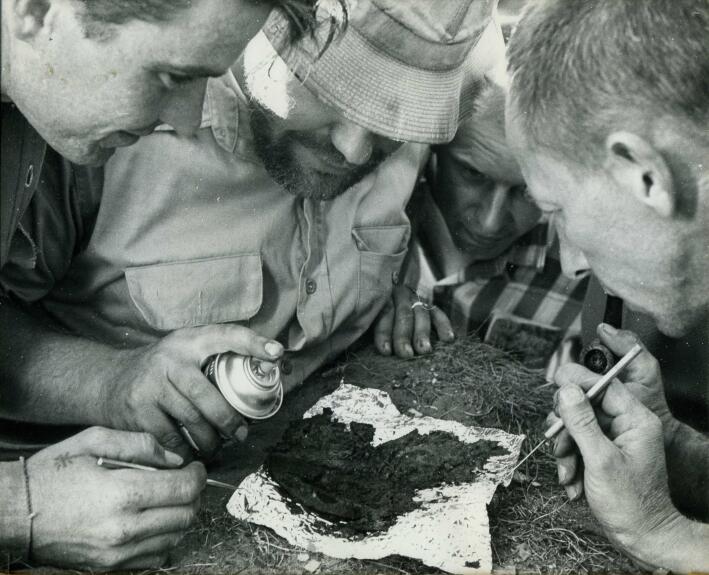
Riverside Site,Menomone,Michigan,Fea.29,Ostberg,Hruska,Koeppler,Aug.12,1961,44 blades,copper,organics.
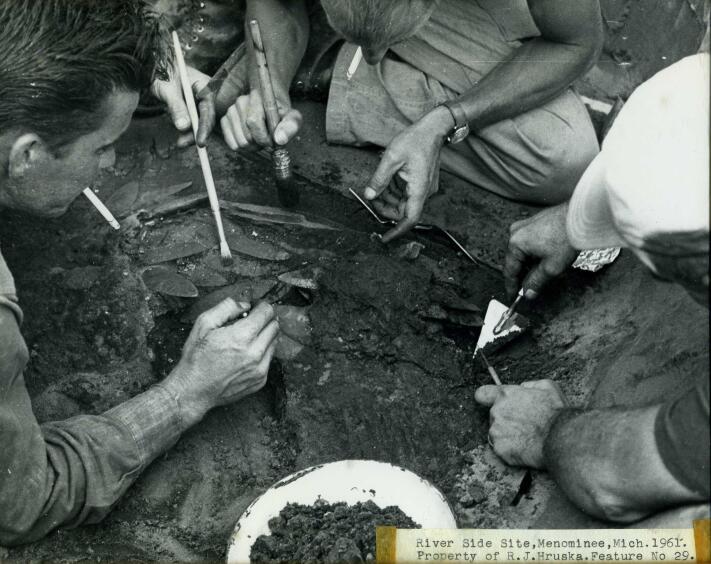
Riverside site,Mich..Fea.29,44 hornstone blades,Ostberg,Koeppler,Turney.
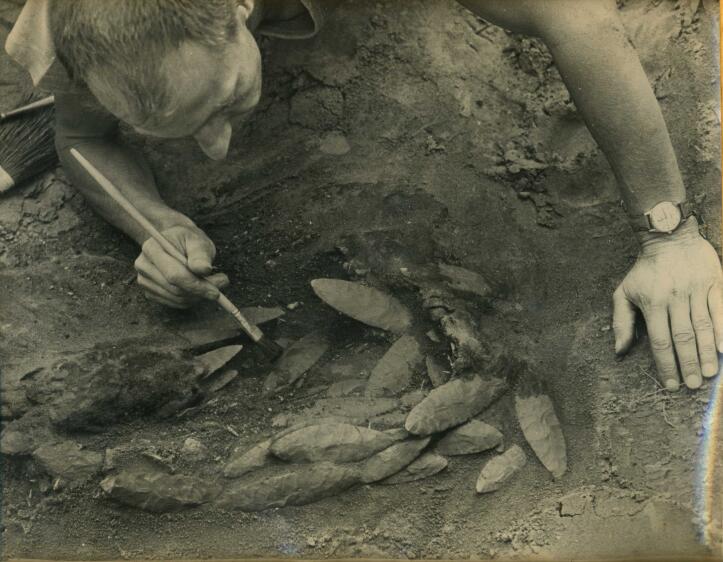
Riverside site Menomonee,Mich.Fea.29,Paul Koeppler,44 hornstone blades.
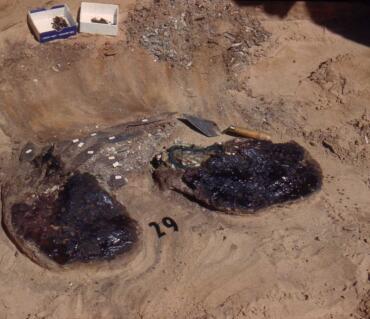
Riverside f29_1.jpgite Fea.29,blades,cremains,organics,ochre stain.
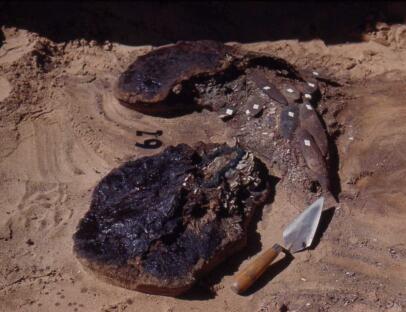
Top view,Fea.29,Right organic cluster has bark fabric and possible moose hair weave.
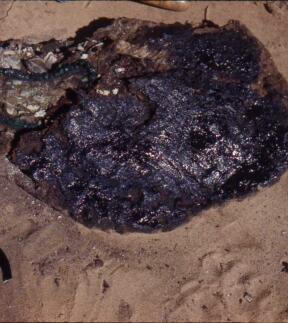
Fea.29,upper left white cremains,below green copper beads,dark organics.
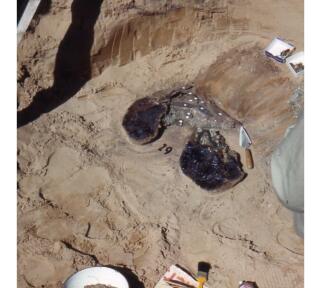
Fea.29,Blades removed,organic clusters remain.
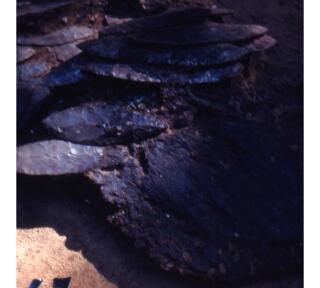
Fea.29,closeup of hornstone blades.
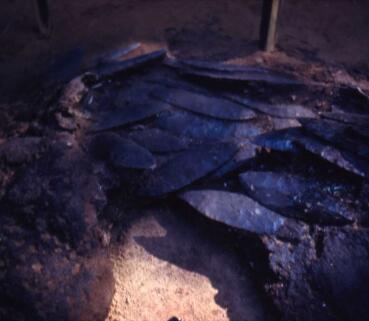
Fea.29,dark image of blades.
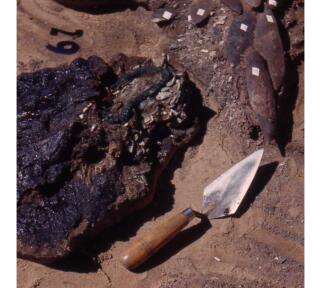
Fea.29,right organic cluster,Cu beads,cremains,trowell points North.
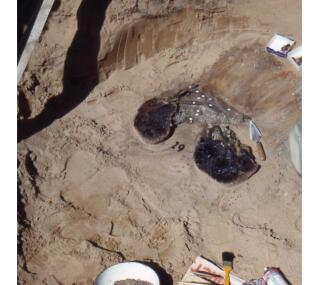
Fea.29. Top view,Cu beads,organics,red ochre present in all of feature.
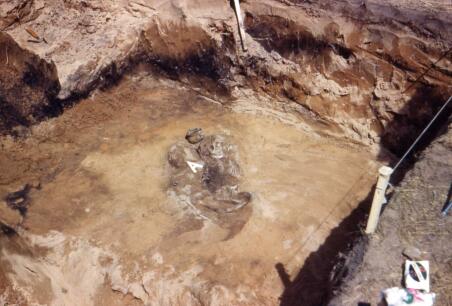
Riverside site childs burial oriented North,milk teeth.
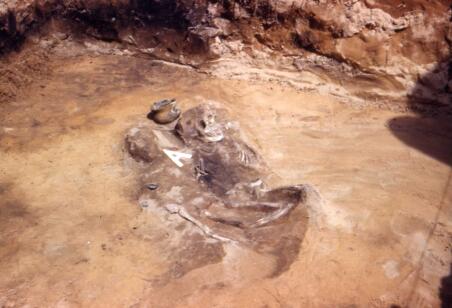
Riverside site childs burial with vessel,bone harpoon,oriented North,depth 3feet below present surface.
Potato Rapids, Historic Period Burial, Salvage and Extraction,Peshtigo River, Wisconsin Circa 1965.
In order to prevent vandalization this unmarked Historic Period Burial was removed and taken to the Oshkosh Public Museum circa 1964. The burial was cast in plaster for the purpose of enabling better control of excavation at the museum. The excavation was directed by Robert Hruska of the Oshkosh Public Museum.
The burial site is a natural rise of land consisting of sand . The soil type allowed the use of a,sand saw to clear sand for the deck boards to be pushed and jacked under the burial. I made a sand saw using a piece of wood and putting nails in it to make teeth to cut into the sand. An auto jack was required to push the boards in place when resistance and weight made it difficult for crew members to push the boards. Under the edges of the deck 2x4 members were placed and deck members nailed to the 2x4’s. Next 8p nails were nailed around the perimeter of the plaster cover over the burial seal the edges of the plaster cover. The plaster cover was made with newspaper first laid over the burial then a coat of plaster,chicken wire,palster,binder twine,plaster,binder twine. The multiple layers were laid until the crew felt there was sufficient thickness to protect the burial. The museum technicians mentioned that the chicken wire caused difficulty and that the binder twine was sufficient.
Soil type had caused skeletal material to be in poor condition.
The burial was on display for many years until given to a Native American group under the requirements of N.A.G.P.R.A.
I hope these images and instructions will help archeologists safely remove burials and features that are facing destruction.
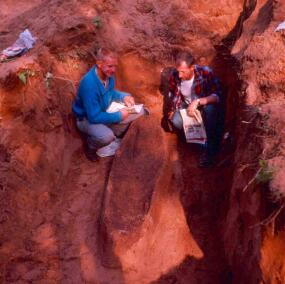
Potato Rapids burial exposed,Darrel Behland left,Paul Koeppler right. Approxamate depth five feet
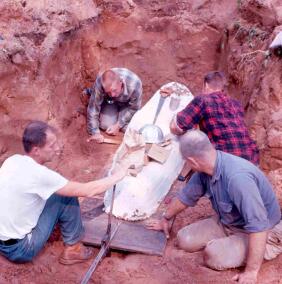
Potato rapids burial,Paul koeppler jacking decking,Behland,Ostberg,Turney.
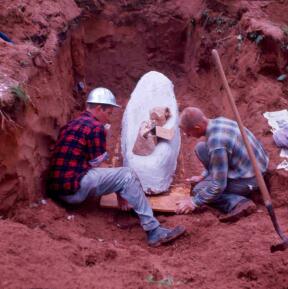
Potato Rapids burial,Ostberg,Behland setting decking.
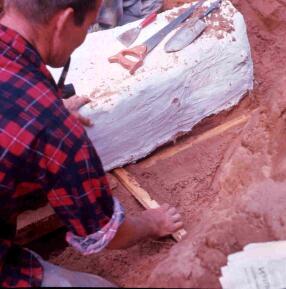
Potato Rapids burial,Ostberg using sand saw to allow decking to slide under burial.
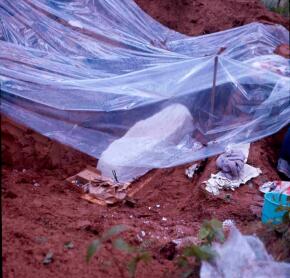
Potato Rapids burial covered for rain protection.
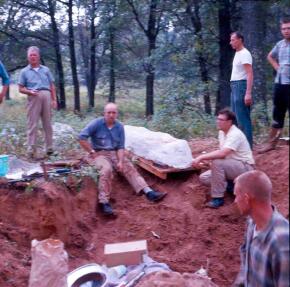
Burial on decking above ground in plaster cast.
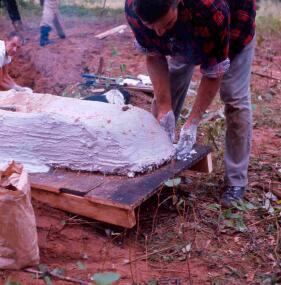
Potato Rapids burial, sealing the edges with plaster of paris.
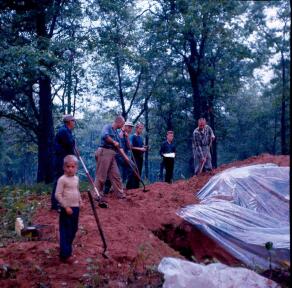
Potato Rapids, crew Paul Turney with pipe,Darrel Behland at right.
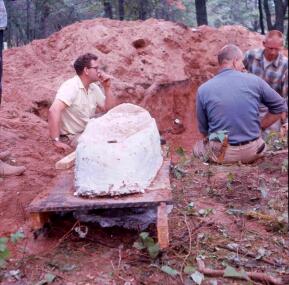
Potato Rapids, burial ready for loading into van,weight circa 500 lbs.

Potato Rapids ,burial being loaded into Oshkosh Public Museum's van.
The work of salvage, of the features at the Riverside site and Potato Rapids site was done by volunteers from The Wisconsin Archeological Society without pay or remuneration. Prior to government mandated programs volunteers worked to preserve impacted burials,dwelling sites etc. that were encountered by sand and gravel removal,road construction,urban expansion,agriculture,bank erosion of lakes and rivers,etc.. Society members documented mounds,mound groups,dwelling sites,etc. and recorded them in the journal of the Wisconsin Archeological Society Entrys were also added to the Wisconsin codification files. The Journal of the Wisconsin Archeological Society is the oldest publication of its kind in America. The subject content of the journals is not limited to archeology but also includes articles of anthropological,ethnographic nature related to Wisconsin prehistory and history.
Dating of artifacts




























